This is it, ladies and germs. This is where the rubber meets the road, the buck stops and we separate ourselves between thinkers and doers. Over the last few weeks, I’ve been exploring the wonderful world of GTKTICSFWSSBP, also known as Getting to Know the International Competitiveness Strategy for Washington State Series of Blog Posts. We’ve talked about the finding that 40% of all jobs in Washington are tied to trade. We’ve marveled at the importance of services exports to our state’s trade economy. And we’ve dissected the Strategy’s SWOT analysis of Washington’s international competitiveness (and announced a contest too!).
And while there’s lots more to explore (look forward to future GTKTICSFWSSBP posts on imports and on China), it’s time to get to the point: that is, what should Washington do about its international competitiveness.
We didn’t write the International Competitiveness Strategy as a research project, or an interesting exploration of the current state of affairs. The Strategy was always intended to be…well…a strategy, one that guides us toward collective action on clear, tangible steps to maintain and improve Washington’s trade economy.
In fact, the Strategy contains six such recommendations. And (to save you time reading it yourself) here they are:
- Implement a Washington state trade communications campaign to reinforce the importance of trade regularly and consistently
- State-level advocacy for increased investments in international competitiveness, including infrastructure, education and the marketing and branding of our state to potential customers, students, tourists and investors.
- Continued growth of Washington’s federal trade policy advocacy capacity, including more harbor maintenance tax benefits and enforcing global intellectual property rights
- Leverage other strategies to increase port competitiveness, especially at the state and federal level.
- Create a statewide international competitiveness coordinating committee and annual conference to engage key stakeholders to discuss issues and opportunities
- Increase trade by Washington companies in key industries and with targeted countries, specifically China and developing countries in Southeast Asia, the Middle East and Africa.
Pretty straightforward and specific. How did we come up with these recommendations? Well, if I had a whiteboard in front of me, I could draw you lines directly from the SWOT analysis to these recommendations. For example, a top challenges was the lack of clarity about the roles and responsibility of all of the international organizations in the state; recommendation 5 addresses that. Or take the identified threat about the lack of public support for trade; thus and therefore, recommendation 1!
Essentially what I’m telling you is that we are recommending that we take advantage of our strengths (by leveraging them and continuing to invest in them), fix our weaknesses, grasp our opportunities and negate our threats. Brilliant, right? Oh, you think that’s pretty obvious and straightforward? Well, that’s fine too. In fact, that’s great. The clearer the reasoning and the more obvious the need, the better
Page 43 of the International Competitiveness Strategy for Washington State.(one of the last few pages) is a matrix of implementation with tactics, lead stakeholders and timeline for each recommendation. Maybe we should have made that one of the first few pages because it’s that important. It’s what separates the Strategy as an actionable document from a report that just sits on a shelf.You’ll see a lot more on the State of Trade blog in the coming months as we actually begin to put these implementations into action. And if you’re interested in participating, let us know. We’ll take all the help we can get.

